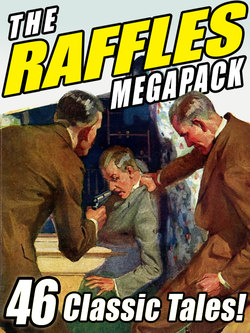Читать книгу The Raffles Megapack - E.W. Hornung - Страница 5
ОглавлениеINTRODUCTION: RAFFLES AND E.W. HORNUNG
Ernest William Hornung (1866–1921), known professionally as E. W. Hornung (his nickname was “Willie”), was a poet and English author, most famous for writing the A. J. Raffles series of novels about a gentleman thief in late 19th century London.
Hornung was born in Middlesbrough, England, the third son and youngest of eight children of John Peter Hornung, who was born in Hungary. Ernest Hornung was educated at Uppingham School during some of the later years of its great headmaster, Edward Thring. Hornung spent most of his life in England and France, but in December 1883 left for Australia, arrived in 1884 and stayed for two years. There he worked as a tutor at Mossgiel station in the Riverina.
Although his Australian experience was brief, it influenced most of his literary work from A Bride from the Bush (1899) to Old Offenders and a few Old Scores, which was published after his death. Nearly two-thirds of his 30 published novels make reference to Australian incidents and experiences.
Hornung returned to England in February 1886, and married Constance (“Connie”) Aimée Monica Doyle (1868–1924), the sister of his friend Sir Arthur Conan Doyle, on September 27, 1893. Hornung worked as a journalist and also published the poems in the newspaper The Times. The character A. J. Raffles, a “gentleman thief,” was published first in Cassell’s Magazine during 1898, and the stories were later collected as The Amateur Cracksman (1899). Other volumes of stories in the series include The Black Mask (1901), A Thief in the Night (1905), and the full-length novel Mr. Justice Raffles (1909). He also co-wrote the play Raffles, The Amateur Cracksman with Eugene Presbrey in 1903.
After Hornung spent time in the trenches with the troops in France, he published Notes of a Camp-Follower on the Western Front in 1919, a detailed account of his time there.
Hornung’s only child, a son, was killed at the Second Battle of Ypres on 6 July 1915. Hornung then began work with the YMCA in France. Hornung died in Saint-Jean-de-Luz, in the south of France on 22 March 1921, survived by his wife.
In addition to his novels and short stories, Hornung wrote some war verse. His play based on the “Raffles” stories was produced successfully. Hornung was much interested in the game of cricket, and was reportedly “a man of large and generous nature, a delightful companion and conversationalist.”
The model for Raffles was George Cecil Ives, a Cambridge-educated criminologist and talented cricketer according to Lycett.
